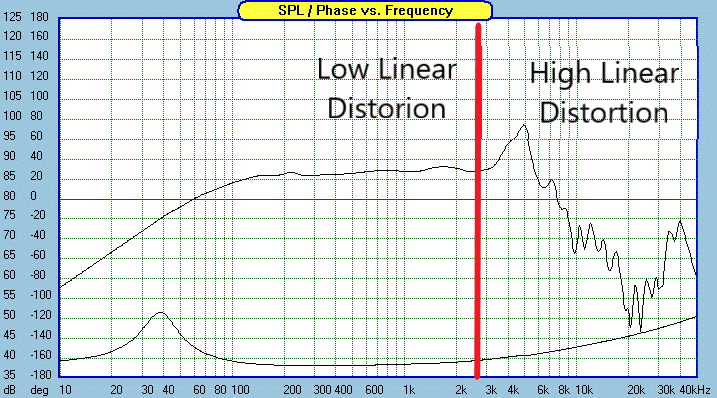When Passive Radiators Are Better Than Ports

Let’s be honest, passive radiators add a whole lot more to the cost of a system than a standard port, even though they both work on the same principles. Now, you might hear some say that a passive radiator system acts more like a sealed box, but that is an audio myth. Passives tune a box the same way a port does. They act as a resonance system coupled to the air spring inside the box and resonate based on their tuning. For both passives and ports, the box volume plays a role in that tuning and output. For passives, the weight added to the passive helps tune it to its final level, whereas a port is tuned using the surface area of the opening and length. Given that both play the same role in speaker design, you might ask why anyone would choose the much more expensive passive radiator over a cheap piece of plastic tubing of which most ports are made.
There are a few things you need to consider when designing a ported system. First, you want to make sure the vent air velocity is low enough to avoid chuffing. Generally this is set at about 5% of the speed of sound, or around 17.3 m/s. Second, as I mentioned, a ported system is tuned by a combination of enclosure volume and the volume of air (or the surface area of the port opening by the length) displaced by the port. Make the port with a larger opening, and you need to make it longer for the same tuning. Make the enclosure smaller and the port length has to get longer. This has to be taken into consideration when you are looking at minimizing the vent air velocity. Larger port openings reduce the air speed, but that also means a longer port for the same size box. Lastly, bigger pipes create resonances that can be pushed down into the operating (and therefore audible) bandwidth of a subwoofer.
To demonstrate how this works, let’s look at the SDX12, but remember, this problem is not unique to the SDX12. It is a problem that all high displacement drivers face. The SDX12 really points this out well because it has a full 28mm of Xmax and can reach very deep bass notes in a rather small box. The SDX12 looks great in a net 45 liter (1.6 ft3) box tuned to 22 Hz. At that tuning you get a nice 23/19/17 Hz f3/6/10.
So let’s start with a 3” port and see where we are at. In this size box, a 3” diameter port requires a length of 22.5” which seems fairly manageable. However, when we look at the vent velocity, at only 50 watts we have already reached our 5% limit of 17.3 m/s on air velocity. At the same time, we are only using 4mm of excursion from the sub, so we haven’t even come close to maxing out its potential.

Ok, so let’s move up to a 4” port. With a 4” diameter port, we need the length now needs to be 50” to maintain the same tuning. This is big, but still doable. But 4” diameter still doesn’t keep our vent velocity low enough. At 140 watts, we have broached the 17.3 m/s rule while still only hitting about 9mm of excursion.

Let’s just jump ahead and see what port size we need to utilize the SDX12 to its full potential. At 1000 watts of input power, the SDX12 would need a 7” vent to stay under the 17.3 m/s rule. With a 7” diameter port, you would need to make your port 111” long to maintain the same tuning! Not only is this incredibly impractical to fit in a 45 liter box, but you have introduced resonances all the way down into the subwoofers operating range. The port alone would equal 80 liters of volume so your box would now have to be over 125 liters before the port, which means that small box isn’t so small anymore.
As you can see, getting a port to tune a small box low enough while preventing chuffing can be quite a challenge. This is where passive radiators excel. Passives have several things going in their favor for small box use. First, they don’t suffer from vent noise. Passives have an excursion limit on their suspension that has to be accounted for, but they won’t ever chuff like a port. Second, they take up very little space in your box, so you can maintain that small footprint that most people want. Third, they don’t suffer from pipe resonances like a port can, so you won’t ever get audible resonances in your operating band.
If you model the SDX12 in the same box with dual APR12 passives, you’ll see that you can pump 1000 watts into it before reaching limits of the passives or the driver itself while achieving the same f3/6/10. As a comparison, that gives you a full 10 dB more output potential over a 4” diameter port. The alternative is to go with a much bigger box, which allows you to reduce the length of the port to a more practical size. We’ve found most people (or at least their significant other) prefer their subwoofers to be as small as possible.

We’ve had several people ask us why our subs don’t work as well as some other commercially finished subs in a ported enclosure. The answer to that is that they do. For instance, you only have to do a quick Google search to see many complaints about chuffing on a very well-known brand’s flagship $2500 16” sub. The laws of physics can’t be broken by any company. Chuffing isn’t a caused by the subwoofer you are using. Rather, it’s a product of the enclosure design and output levels. Because our subs have high output potential and work well in small enclosures, a passive just works better.














